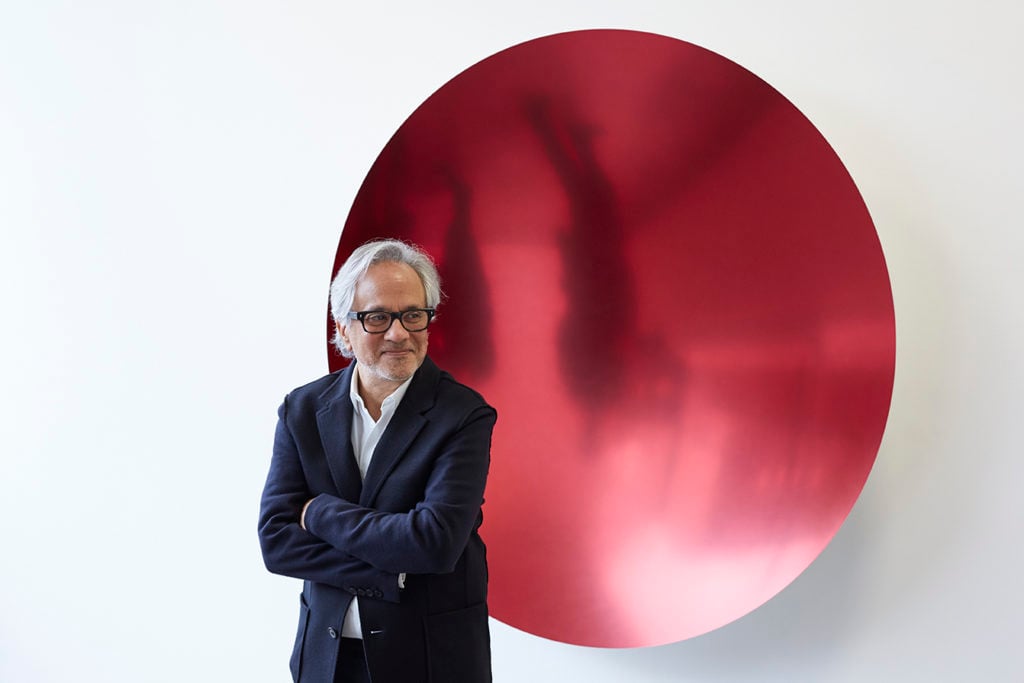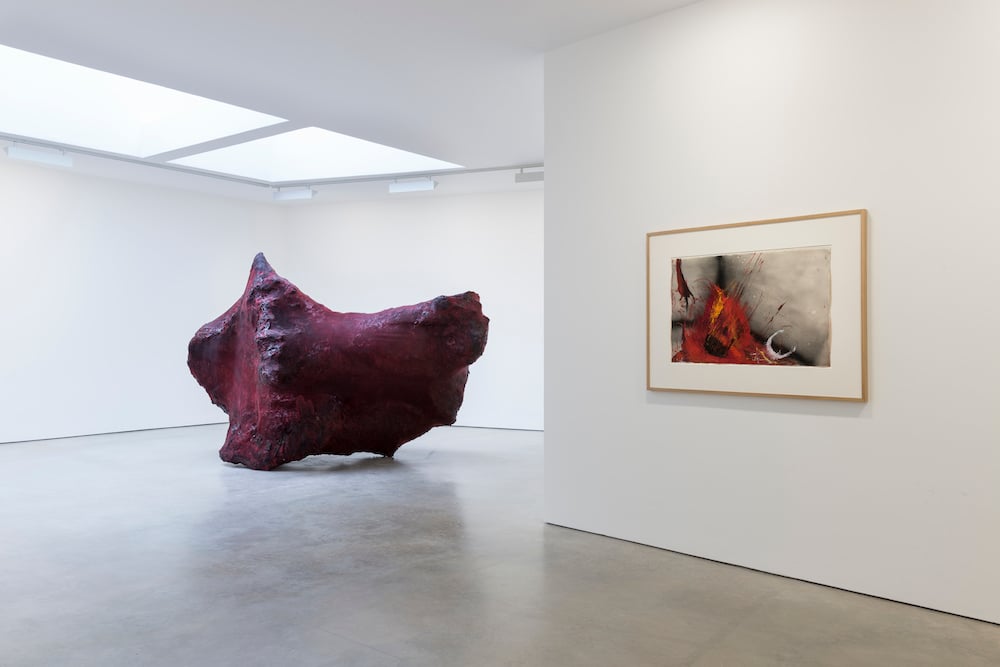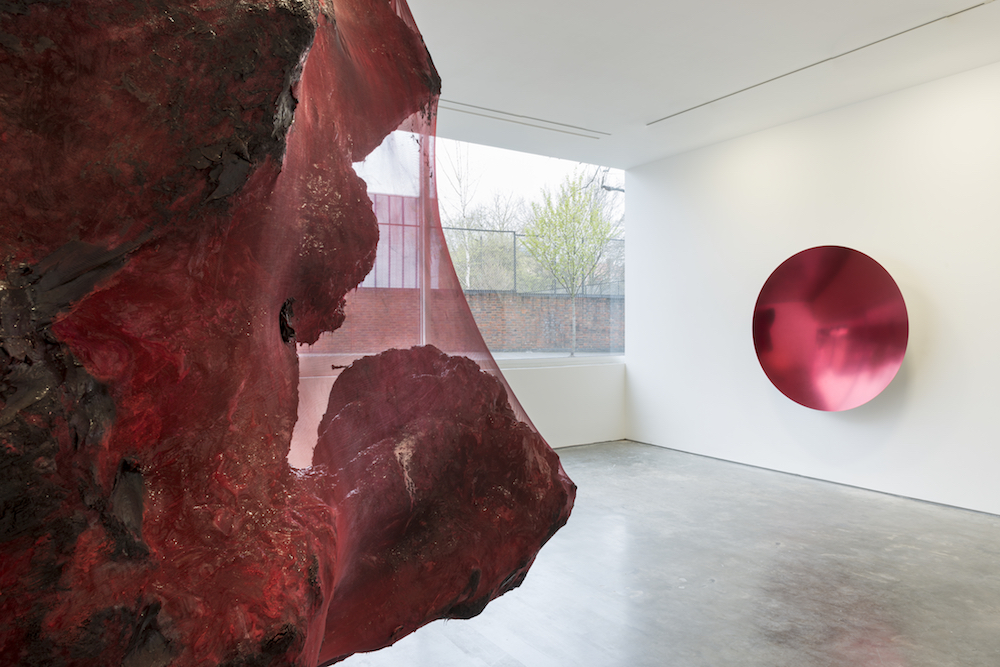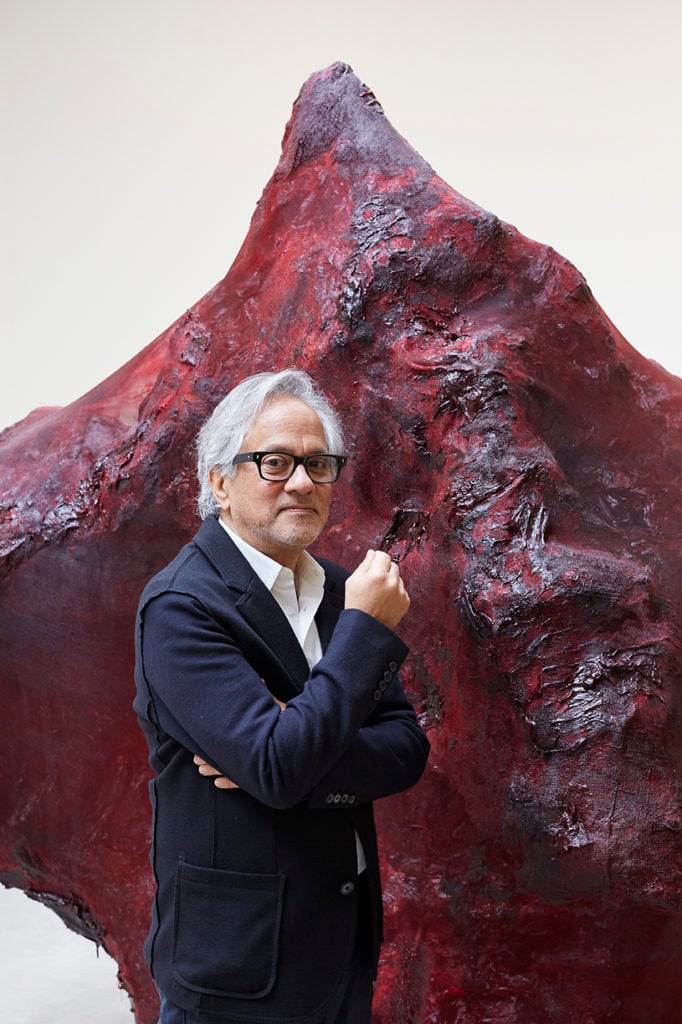People
He’s Furious Over Brexit, But Anish Kapoor Says Don’t Look at His Art for Political Messages
artnet News spoke to the artist about his new show at Lisson Gallery, politics, and death.

artnet News spoke to the artist about his new show at Lisson Gallery, politics, and death.

Yesterday, on the morning that Britain’s Prime Minister triggered the process to leave the European Union, across town, one the country’s most celebrated artists—and a vocal supporter of the Remain campaign—unveiled an exhibition of new works fraught with horror and dread. Anish Kapoor’s latest show at London’s Lisson Gallery is built around a trio of sculptures that suggest nothing so much as severed, decaying bones, and viscera seeping through mesh bags.
On the walls, a series of gouaches describe a kind of primordial chaos, in which Kapoor’s flared tubular forms (think Dirty Corner) emerge from flaming licks and lava-like hot splashes.
In the current climate, even his familiar concave mirrored discs—here occluded, or partly so, by a matte red coating—read as warped reflectors of the real world, providers, perhaps of alternative facts.

Anish Kapoor, installation view at Lisson Gallery London, March 2017. Photo Dave Morgan, ©Anish Kapoor, courtesy Lisson Gallery.
Now 63, and a prominent figure in the British art world for some three decades, Kapoor is a seasoned pro at evading reductive political readings of his work. The coincidence of the show opening on this “bloody awful day,” however, had not escaped him.
“I’m not really interested in agitprop, but at the same time, the work is not disconnected,” he said. Despite his vocal stance on recent political tendencies and world events—notably the treatment of refugees and rise of right wing populism—he dismisses art that “ties itself [only] to the questions and problems of a certain moment” as “short lived.”
Formally, this new suite of sculptures represent a massy evolution from Kapoor’s earlier experiment painting with silicone: the triptych Internal Object in Three Parts (2013-15) that was shown at this gallery in 2015 before moving on to the Rijksmuseum in Amsterdam and MACRO in Rome.
Built up in color-infused layers of the fleshy gel-like material used to make breast implants, the surfaces of Internal Object protruded from the canvas like flayed entrails: paintings, but only just.

Anish Kapoor, installation view at Lisson Gallery London, March 2017. Photo Dave Morgan, ©Anish Kapoor, courtesy Lisson Gallery.
For the new works—To A Mouth, Shade and Red Images in The Red (all 2016)—fiberglass armatures have been painted with the highly pigmented silicone in tones of clotting blood.
While one could hardly label them agitprop, they are undeniably provocative on an emotional level. “Good!” says Kapoor. “We want visceral reactions.”
Kapoor has long dealt in the associative power of color, and in an exhibition dominated by reds ranging in tone from bright flame to sliced muscle, there is a palpable sense of underlying fury. Would he say it was an angry show?
“I think there is a certain inner world of tumult of some kind,” Kapoor concedes. “And it’s ok to say, ‘Yes, it’s a sad day: we live in a world where we hate foreigners that much that we need to go through goddamn Brexit in order to get a 15 percent reduction in the influx of people coming into the country’—I mean, insanity! All these questions are around, but I resist the idea that art can do that, or needs, or wants, to do that directly.”

Anish Kapoor at Lisson Gallery, London, on March 29. Photo Jack Hems, courtesy Lisson Gallery.
Kapoor’s resistance to making explicit association between his politics and his art comes in part as a reaction to what he sees as a tendency in contemporary work to leave no interpretative role for the viewer, instead becoming an “object telling you what it’s about.”
And, of course, these new sculptures are part of Kapoor’s ongoing formal exploration of emotive disarray and entropy (think of the mess fests of Svayambh, and Shooting into the Corner at his 2009 show at London’s Royal Academy) that has long functioned as a counterbalance to his “rational” and refined works.
There is, though, too, an unexpectedly personal edge to the artist’s exploration of corporeal fragility.
Kapoor refers to the painted mesh layer that covers the sculptures as “veils,” and originally conceived them as a linking point back to the conventions of painting: the foregrounding layer that leads the eye deeper.
Of the three sculptures, Shade was made first, and the artist admits that he was surprised at the effect that the mesh had: the object appeared to sit within its own self-contained shadow.
“Of course that has all kinds of associations with—you can’t avoid it—death, decay,” says Kapoor. “Do I like that? I think I do. I’m 63, I think about death a lot.”
“Anish Kapoor,” an exhibition of new works by the artist, is on view at Lisson Gallery, London, from March 31 – May 6, 2017.